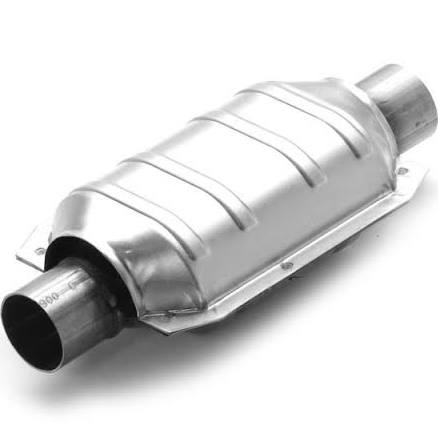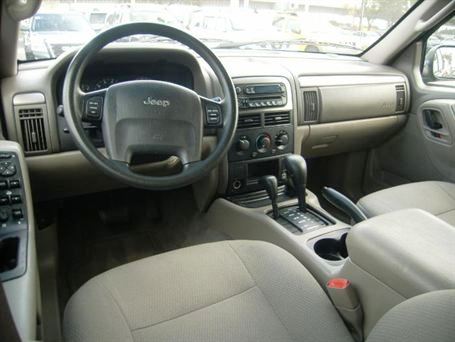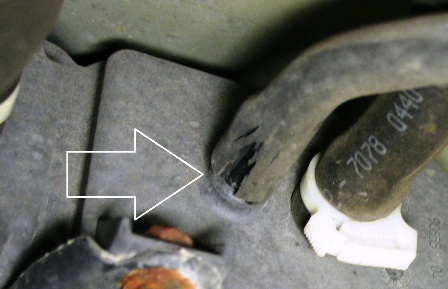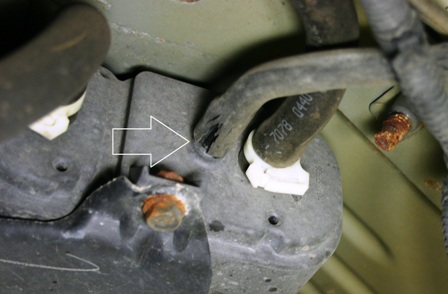July 23, 2014
Check Engine Light
4 Comments
 DenLorsTools.com Summary: One of our recent questions was regarding a performance issue and lean codes on a Ford F150. The fact that the catalytic converters were removed was skated over as a non issue. There are several things to consider before going to the extreme of removing a catalytic converter. Legal issues, running or performance issues etc. See the following for more information on what can happen and why the catalytic converter or converters should not be removed.
DenLorsTools.com Summary: One of our recent questions was regarding a performance issue and lean codes on a Ford F150. The fact that the catalytic converters were removed was skated over as a non issue. There are several things to consider before going to the extreme of removing a catalytic converter. Legal issues, running or performance issues etc. See the following for more information on what can happen and why the catalytic converter or converters should not be removed.
Read the rest…
February 24, 2012
Check Engine Light, Jeep
No Comments

© DenLorsTools.com Summary: This auto repair blog consists of questions from a Jeep Grand Cherokee owner and answers on possible causes of over-heating and a CEL (Check Engine Light). The Jeep owner has a CEL that came on after his vehicle overheated. With no obvious leaks he asks advice.
Read the rest…
December 24, 2010
Check Engine Light, DIY, EVAP, How To Auto Repair
38 Comments

© DenLorsTools.com Summary: DenLors auto repair blog covering a common EVAP (Evaporative Emission Control) system problem. EVAP charcoal canisters can contaminate the system causing flow and vent issues. Sometimes problems with venting can make it almost impossible to fill up at the gas pump. A very frustrating ordeal at the pump is to have the pump shut-off while putting gas in BEFORE the tank is full. Some vehicles even have the fuel splash back out due to improper vent tube operation. This car repair article points out several things to look for when charcoal from an EVAP canister has broken loose and has entered the EVAP lines causing a blockage.
Read the rest…
December 18, 2010
Check Engine Light, Chevrolet, DIY
No Comments

The engine may intermittently jump, setting a DTC P2138 fault code.
© DenLorsTools.com Summary: In older cars accelerator pedals were linked to the carburetor by cable, my how times are changing! Now, many automobiles have the “fly by wire” set up. Instead of cable from the gas pedal, most new cars use computers and various components to make the car GO. This DenLors car repair article covers common fault codes like the P2138 which have to do with the electronic gas pedal used in many cars today. Read on to find out how the auto industry has mimicked the aircraft industry…
Read the rest…
November 13, 2010
car tools, Check Engine Light, EVAP, How To Auto Repair, Mechanics Tools
7 Comments

© DenLorsTools.com Summary: Car repair blog covering the most common causes of EVAP fault codes which are a major reason for Check Engine Lights to come on. Explanation of the purpose of Evaporative systems and tips on what to look for when trouble shooting EVAP fault codes. With a code reader or scan tool, many times the cause of a car’s EVAP code can be diagnosed without additional car mechanic’s specialty tools. Learn which faults are simple fixes and when help from a car repair manual or a dealer tech on-line may be needed. Related car tool blog linked for “EVAP smoke machine use” when leaks are hard to find. Read the rest…
October 31, 2010
Auto Scan Tool, Auto Specialty Tools, Check Engine Light, Chevrolet, DIY, How To Auto Repair
No Comments
© DenLorsTools.com Summary: Applies to 2002 to 2009 second generation Trailblazers and Envoys with 4.2 Liter in-line 6 cylinders. This auto repair article is for GMC Envoys or Chevrolet Trailblazers when a P1281 fault code is scanned using a code reader or scan tool. The P1281 fault code is related to the engine not reaching operating temperature within the set parameter. More explanation of what the code means and suggestions on how to complete the repair much easier. Using any code reader or scan tool with OBD II capability is all that is needed to read and erase the fault code.
The thermostat is NOT just to keep the engine cool, it also helps the engine heat up quickly to normal operating temperature within a certain time-frame. For the catalytic converter to operate at it’s highest efficiency the computer needs to be in closed loop. Closed loop means that the computer is in more control of fuel mixtures based on inputs from several sensors. Until the engine is running at the normal operating temperature, the computer usually controls the fuel mix less efficiently. That’s why it’s important for the thermostat to stay closed until the engine warms up quickly. If it stays open or opens up too quickly the motor will not reach the desired temp as quickly as it should. Most of the time when this code is retrieved, the t-stat is not working properly.
1/4″ swivel socket and extension pictured above used to start the bolts.
The thermostat is located on the left side of the engine. After removing the driver’s front wheel the t-stat housing can be seen over the frame. A long 1/4″ extension and 10mm swivel socket makes accessing the bolts holding the housing much easier. Usually this thermostat comes with a new housing as well. The tricky part is starting the bolts back in when installing the new t-stat. It’s easy to drop the bolts before actually getting them started. An old trick for holding bolts in place in hard to get to areas is to use small orings to act as a retainer. The o-rings are perfect for preventing the bolts from falling and are small enough to be collapsed when the bolts are tightened as to not cause any problems with the housing seating properly.
To help hold the bolts in place small o-rings are used to prevent them from falling.
Once the thermostat is replaced and the coolant is refilled, the fault code can be cleared. Usually it’s best to run the heater when topping off the coolant to help remove any air pockets that may be in the cooling system. When the heat is blowing hot and the temperature is in the normal range the coolant level will be full. Hopefully this repair article has helped explain and answer questions about the P1281 fault code scanned with a code reader or scan tool. Be sure to check out the links below for even more information and specialty tools.
Related Car Repair Blogs and Auto Tools
Jeep Grand Cherokee Scanned P1281 Fault Code / DenLors Auto Blog
OBD II Scan Tools and Code Readers – DenLors Tools
Lisle Coolant Funnel to Remove Trapped Air in Cooling System
P0017 Chevy Trailblazer, Envoy, GMC Canyon, Colorado – Fault Codes
Chevy Auto Repair Articles – Automotive Repair Blogs for Chevrolet
Car Mechanics Specialty Tools – Automotive Tools and Shop Supplies
August 11, 2010
Check Engine Light, Honda, How To Auto Repair
12 Comments
2006 Honda Accord Check Eng P0141 Heater circuit fault B1 S2
© DenLorsTools.com Summary: Auto repair article with information on the Honda Accord check engine light with a fault code of Po441 or P0135. Code definition and location of sensor when this code is stored in the vehicles computer. Car repair tips including how to access electrical plug for oxygen sensor past catalytic converter and which type of specialty is used for the sensor.
 DenLorsTools.com Summary: One of our recent questions was regarding a performance issue and lean codes on a Ford F150. The fact that the catalytic converters were removed was skated over as a non issue. There are several things to consider before going to the extreme of removing a catalytic converter. Legal issues, running or performance issues etc. See the following for more information on what can happen and why the catalytic converter or converters should not be removed.
DenLorsTools.com Summary: One of our recent questions was regarding a performance issue and lean codes on a Ford F150. The fact that the catalytic converters were removed was skated over as a non issue. There are several things to consider before going to the extreme of removing a catalytic converter. Legal issues, running or performance issues etc. See the following for more information on what can happen and why the catalytic converter or converters should not be removed.



